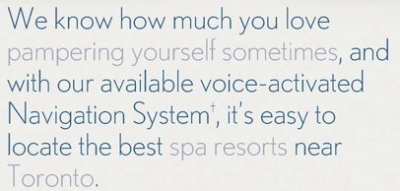Ed2010 is hosting an event on online editing next month, and you should plan to attend if you’re looking to break into the field, or even just broaden your skill set:
Get online: discover the wonderful world of web editing
Ever wondered what it takes to be a web editor? Even in a slow economy there are job opportunities in online publishing. Find out how you can break into the wonderful world of web editing. Join Ed2010 Toronto and our all-star line-up of senior web staffers from some of Canada’s top magazine websites including Jen O’Brien from Chatelaine.com, Bryan Borzykowski from CanadianBusiness.com and Sharon Donaldson from CottageLife.com. Hear how they got into the biz and get advice on how to succeed in the online world.When: Wednesday June 17 from 6:30pm-7:30pm
Where: Northern District Library, 40 Orchard View Blvd (Yonge and Eglinton)
$5 admission fee
Thanks to Rex Hammock for pointing out this interesting comment thread on a Boing Boing article about Wired that itself comments on a New York Times article discussing Wired’s ad revenue problems. (And this is why I love the internet.) Discussion topics include:
• Does print matter?
• The division between print and web staff
• Could wired.com survive the death of Wired?
• Can a print publication really be relevant when discussing tech?
• Why was/is the liquor cabinet on the mag side?
Chris Anderson even gets in on the discussion, but most of all the thread is worth a read (although I confess it’s long and I haven’t gotten through the whole thing yet) for web readers’ perspectives on magazines.
And I love this comment from former Wired staffer Brian Lam:
The spirit of what makes a magazine a magazine doesn’t have to die because it moves to the internet. In fact, it just needs to be treated more like a magazine and given the support the magazines have received so far.
Launching a new site, or relaunching a current one? Make sure that your decisions on the design will stand the test of time. Sometimes, a decision that seems small can have long-lasting implications.
Take images, for example. Chances are, your content will follow a template and that template will have standard image sizes across the site. Your first thought might be that the actual size of the images isn’t a big deal: you can change them later, right? But often, especially on sites that keep a lot of content live over the long term, you’re stuck with the image sizes you started with – unless you want to go back and change all the old ones. The sizes you choose could also make life harder or easier for your web editors or producers – non-standard sizes are often harder to find.
The bottom line? Make sure to consult the people using the site and the system, and think about how you’ll feel about decisions in three to five years.
There’s a recent article over at Folio on three examples of successful paid content strategies. They’re interesting cases, and I hope they give you some ideas on monetizing content online. The two lessons seem to be: 1. You can make money on tangibles and 2. You can make money on subscriptions – if you’re a trade mag for industries with money.
Unfortunately, I doubt most consumer mags would be able to charge $649 to $1,785 per year for newsletters. But if your niche is right, the model just might work for you.
The thing about digital editions that bugs me isn’t the theory, it’s the practice – I’d rather flip through real magazine pages than virtual ones any day. The web is for skipping from site to site and idea to idea – even if I read a long article online (and I often do), I rarely read more than a few in sequence from one site. The magazine experience is missing online, no matter how you try to package your digital material.
But even worse is Time’s new Mine Magazine, which finally arrived in my inbox not too long ago. I wrote about the concept back in March and how I felt it was missing the point of creating an experience for the reader – the whole package has no personality and no consistent vision. Even worse, the “personalized” ads are beyond awkward (why “sometimes”?) – and I’m not quite sure why they put the fill-in-the-blanks text in grey:

They don’t seem to have done anything with the art – individual articles still carry the original magazine’s formatting and section name – and I found just flipping through it rather jarring.
Here, have a look. What do you think?
 |
 |
|
| I'm there says: | |
breesir, to answer your question, the reason magazines don't have dedicated web editors is quite sim... |
|

